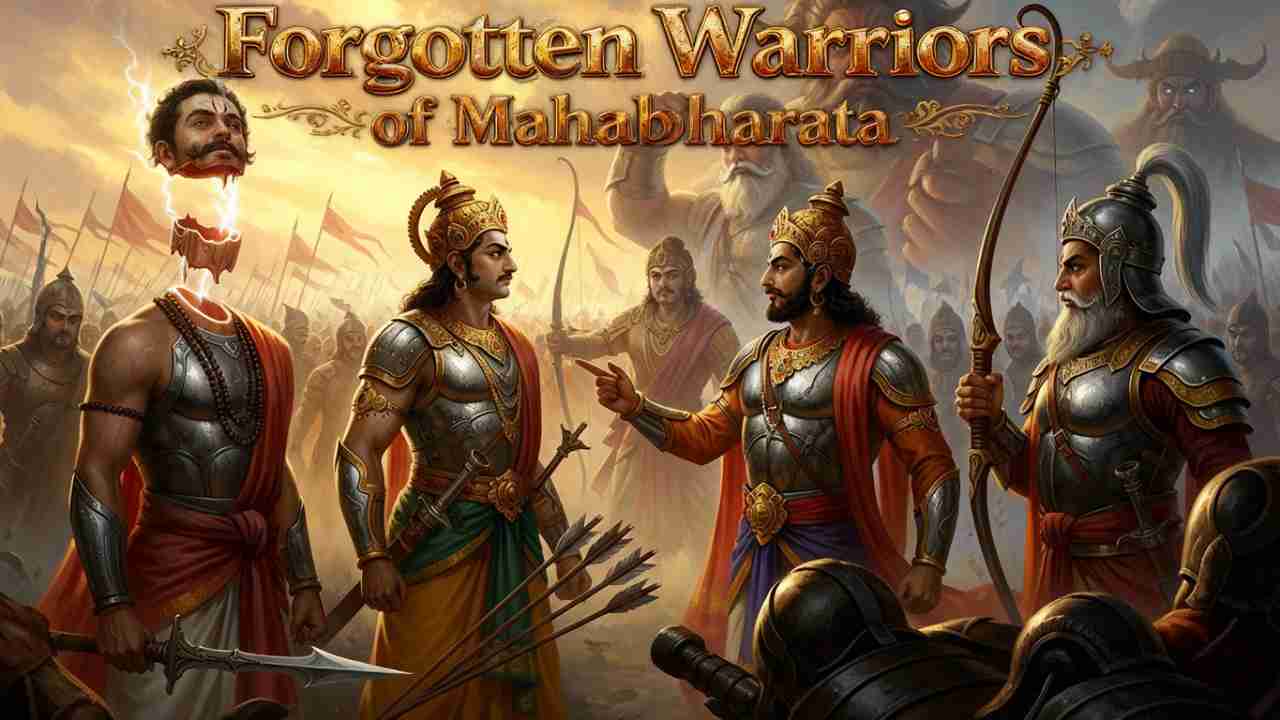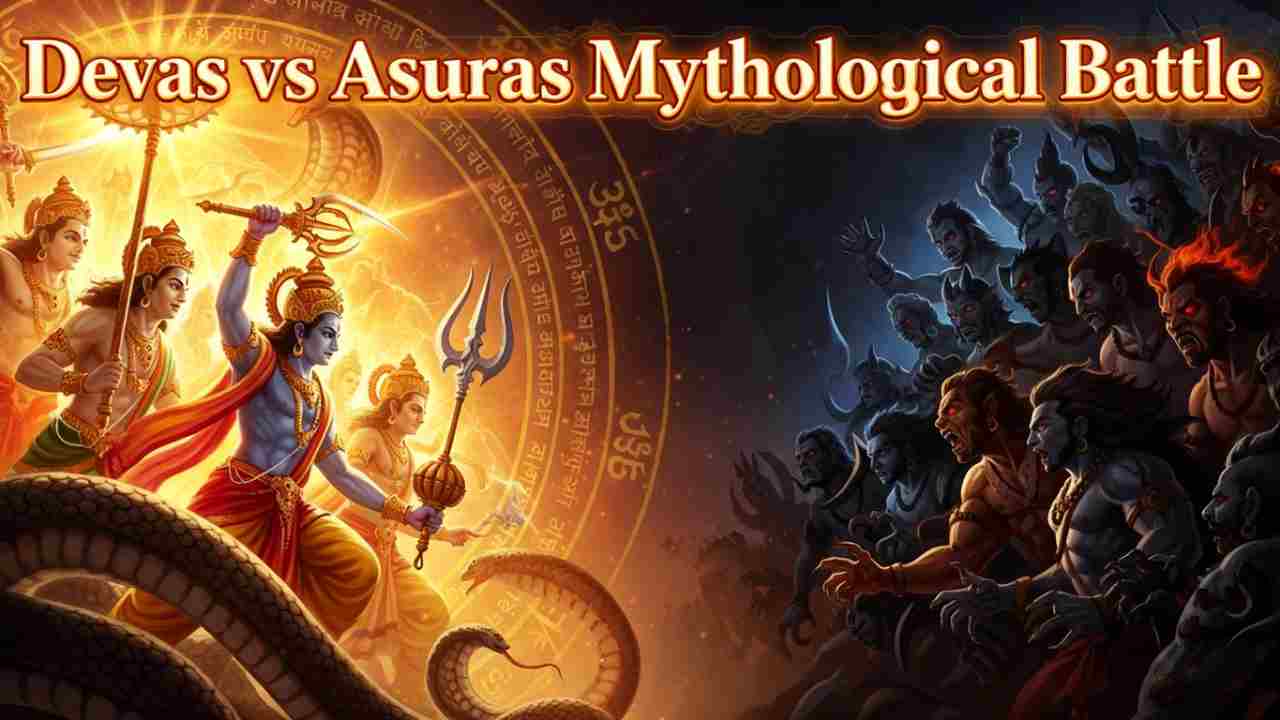
The Devas vs Asuras Mythological Battle is one of the most profound and symbolic tales in ancient Hindu cosmology. It is not merely a story of gods and demons fighting for power, but a timeless metaphor for the battle between righteousness and wickedness, knowledge and ignorance, order and chaos. The Devas and Asuras, though born from the same divine lineage, embody opposing forces that continue to influence the universe; and even the human mind to this day.
From the creation of the universe to the epic wars fought in the heavens, every episode in the Devas vs Asuras Mythological Battle reveals hidden meanings about morality, ego, and the eternal balance of life. Let’s uncover the 10 hidden secrets that lie behind this legendary cosmic war and see what lessons it offers for humanity.
1. Shared Origins and Sibling Rivalry
The Devas vs Asuras Mythological Battle has its roots in one divine family. Both the Devas and the Asuras were born from the great sage Kashyapa, but through different wives. The Devas were the children of Aditi, while the Asuras were born from Diti and Danu. Despite sharing the same father, their destinies diverged sharply. The Devas chose the path of light and wisdom, while the Asuras were drawn to power and desire.
This shared ancestry is a reminder that good and evil are not external forces but arise from the same source. Just as siblings can grow apart due to differences in values, the Devas vs Asuras Mythological Battle reflects the inner conflict of the human soul. Every being has both divine and demonic tendencies. The struggle is not about destroying one side, but about finding balance between them.
2. The Dual Nature of Devas and Asuras
The Devas vs Asuras Mythological Battle isn’t a simple tale of heroes and villains. While the Devas are associated with goodness and spiritual light, they too are not free from flaws. They have shown arrogance, jealousy, and even fear in several stories. On the other hand, some Asuras were virtuous, brave, and highly disciplined.
For instance, Mahabali, an Asura king, was known for his generosity and devotion. Similarly, Prahlada, another Asura-born, was one of the greatest devotees of Lord Vishnu. This complex portrayal reminds us that moral labels like “good” and “evil” are relative. The Devas vs Asuras Mythological Battle symbolizes the continuous inner struggle in all beings, between higher consciousness and base instincts.
3. The Cosmic Cooperation: Churning of the Ocean
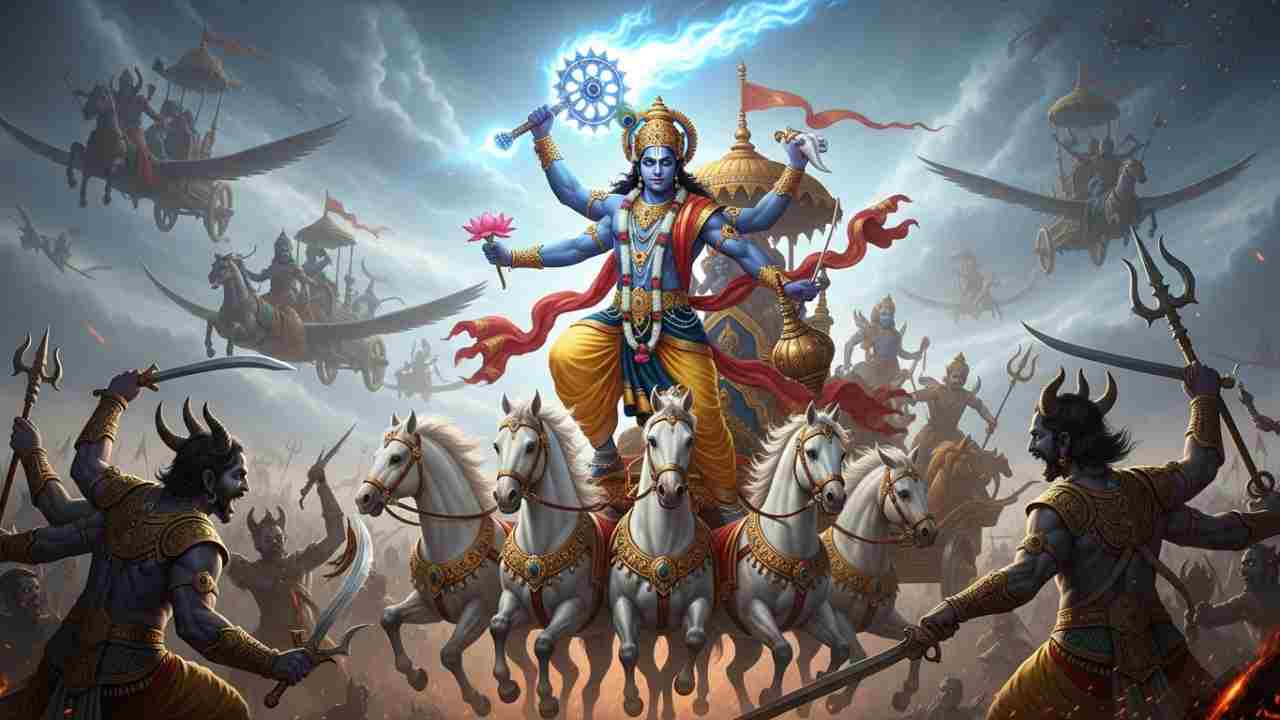
One of the most astonishing moments in the Devas vs Asuras Mythological Battle was the great Samudra Manthan or churning of the ocean of milk. Both sides, despite being sworn enemies, joined hands to churn the ocean to obtain the nectar of immortality, known as Amrita.
The Devas used Mount Mandara as the churning rod and the serpent Vasuki as the rope. They took turns pulling it from either side, Devas from the tail end and Asuras from the head. What emerged was not just the nectar, but also many divine and dangerous things. Goddess Lakshmi, Kamadhenu (the wish-fulfilling cow), and the deadly poison Halahala, which Lord Shiva consumed to protect the cosmos.
This episode teaches that creation and destruction are two sides of the same coin. Even enemies can work together for a greater good when the purpose is divine. The Devas vs Asuras Mythological Battle thus embodies cooperation amid conflict, a cosmic dance of balance.
4. The Secret of Boons and Curses
In many stories, Asuras gained immense power through severe penance and devotion to gods like Brahma or Shiva. However, their downfall often came from arrogance and misuse of these divine gifts. The Devas vs Asuras Mythological Battle repeatedly shows that unchecked ambition leads to self-destruction.
For example, Hiranyakashipu received a boon that made him nearly invincible. Yet, his ego led him to challenge Lord Vishnu himself. Similarly, Bhasmasura gained the power to turn anyone into ashes by touching them only to destroy himself through his own arrogance.
In contrast, the Devas relied on wisdom and humility to overcome challenges. This secret of the Devas vs Asuras Mythological Battle reveals that the true power lies not in boons, but in discipline, control, and surrender to divine will.
5. Celestial Weapons and the Power of Knowledge
The Devas vs Asuras Mythological Battle introduced the concept of divine weaponry, not just as physical instruments but as symbols of spiritual mastery. Weapons like Brahmastra, Narayanastra, and Vajra were manifestations of divine energy. Only those with great self-control, focus, and devotion could summon or wield them.
Indra’s Vajra, made from the bones of Sage Dadhichi, symbolizes sacrifice for the greater good. Brahmastra, the weapon of Lord Brahma, represents ultimate knowledge that must never be misused. Through these, the myth teaches that real strength doesn’t come from external weapons but from spiritual awareness. The Devas vs Asuras Mythological Battle thus reminds us that wisdom and virtue are the greatest weapons of all.
6. The Role of Time and Cosmic Balance
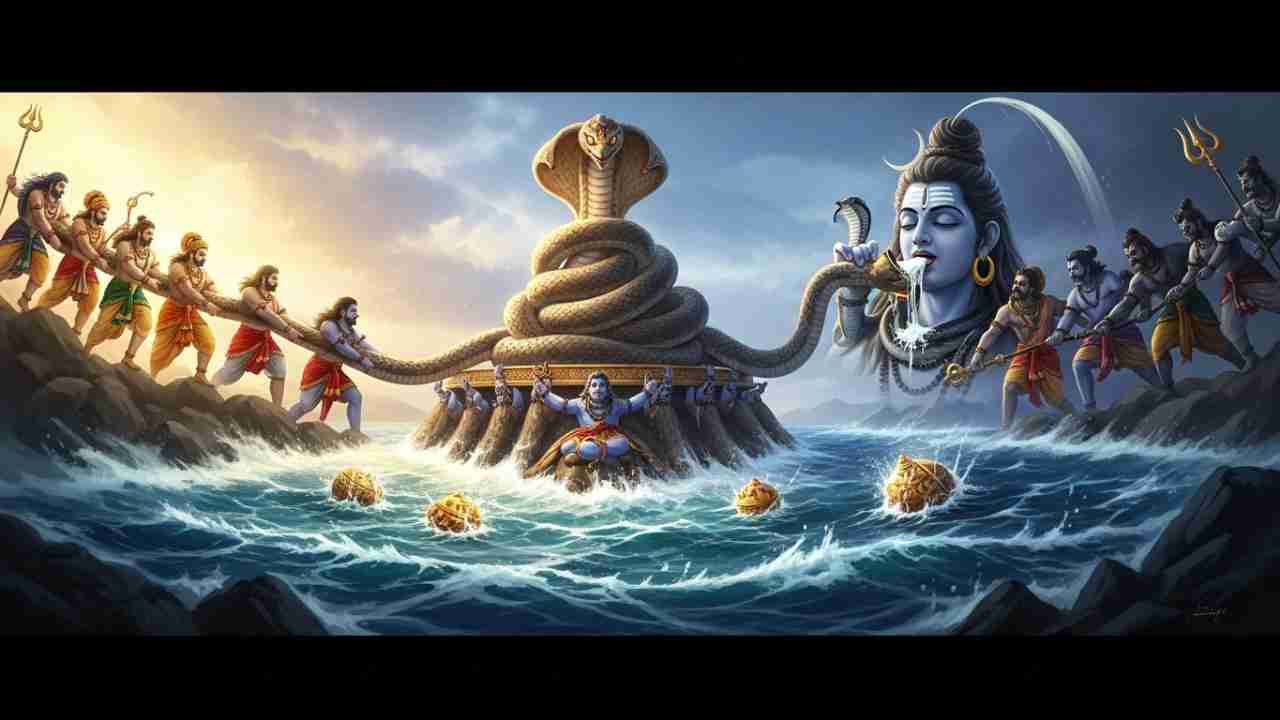
The Devas vs Asuras Mythological Battle has no permanent winner. Victory shifts with time, as both sides are essential for maintaining cosmic equilibrium. Without darkness, light has no meaning. Without Asuras, the Devas would have no reason to evolve.
Each age (Yuga) brings new forms of this battle, sometimes fought externally, sometimes within. The cyclical nature of creation, preservation, and destruction ensures that neither good nor evil can dominate forever. Time, known as Kala, acts as the great equalizer. Thus, the Devas vs Asuras Mythological Battle symbolizes the rhythm of existence, where every rise is followed by a fall and every end brings a new beginning.
7. The Divine Feminine in the Battle
When even the Devas were defeated, it was the power of Goddess Shakti that restored balance. In many legends, the Devas vs Asuras Mythological Battle takes a dramatic turn when goddesses like Durga, Kali, or Chandi appear to defeat invincible Asuras.
Mahishasura, a powerful demon, once drove the Devas out of heaven. From their combined energy emerged Goddess Durga, who battled and destroyed him. Similarly, Kali appeared to annihilate Raktabija, whose blood created new demons with every drop. These stories emphasize that the feminine principle: energy, creation, and compassion. This is the ultimate power of the universe.
The Devas vs Asuras Mythological Battle therefore teaches that true strength lies not just in force but in balance between masculine and feminine energies, logic and intuition, action and emotion.
8. The Symbolic Meaning of the War
Beyond the physical battles, the Devas vs Asuras Mythological Battle is a mirror of the human mind. The Devas represent our higher self: the voice of wisdom, compassion, and discipline. The Asuras represent our lower self: greed, anger, and pride.
Every decision we make is a small version of this cosmic war. When we choose honesty over deceit, forgiveness over revenge, or truth over illusion, the Devas within us win. But when anger or ego takes over, the Asuras rise.
Thus, the Devas vs Asuras Mythological Battle reminds us that divinity and darkness coexist in every soul, and our choices determine which one rules.
9. Hidden Realms and Celestial Strategies
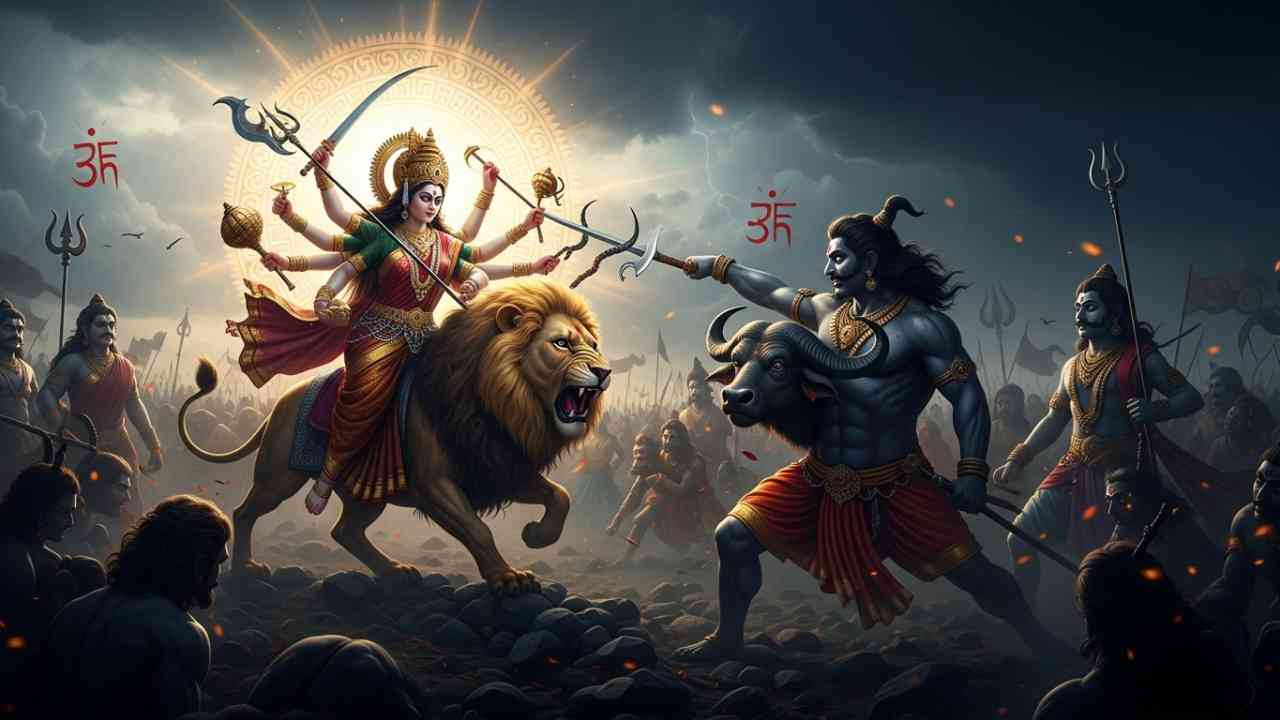
The battlefield of the Devas vs Asuras Mythological Battle spans multiple realms, from heaven (Svarga) to the underworld (Patala). The Asuras, often residing in Patala, were masters of strategy, illusion, and technology. They built great fortresses, including the triple cities of Tripura, which Lord Shiva destroyed with a single arrow.
The Devas, on the other hand, relied on divine wisdom, guidance from Vishnu, and assistance from sages. Their strategies were rooted in faith and patience rather than sheer strength. This contrast highlights two philosophies, material power versus spiritual wisdom. The outcome of each battle depended on which side better understood the cosmic law of balance.
10. The Moral Lessons Behind the Devas vs Asuras Mythological Battle
The ultimate lesson of the Devas vs Asuras Mythological Battle is that neither side is entirely good or bad. The Devas’ victories were not achieved by strength alone but by humility, unity, and devotion. The Asuras, despite their might, were often defeated by their own ego and greed.
From every battle, the universe learned a lesson. From every defeat, came rebirth. The myth teaches us that true victory lies in self-conquest. The war is not just about gods and demons but about mastering our desires, fears, and attachments.
Lesser-Known Stories from the Devas vs Asuras Mythological Battle
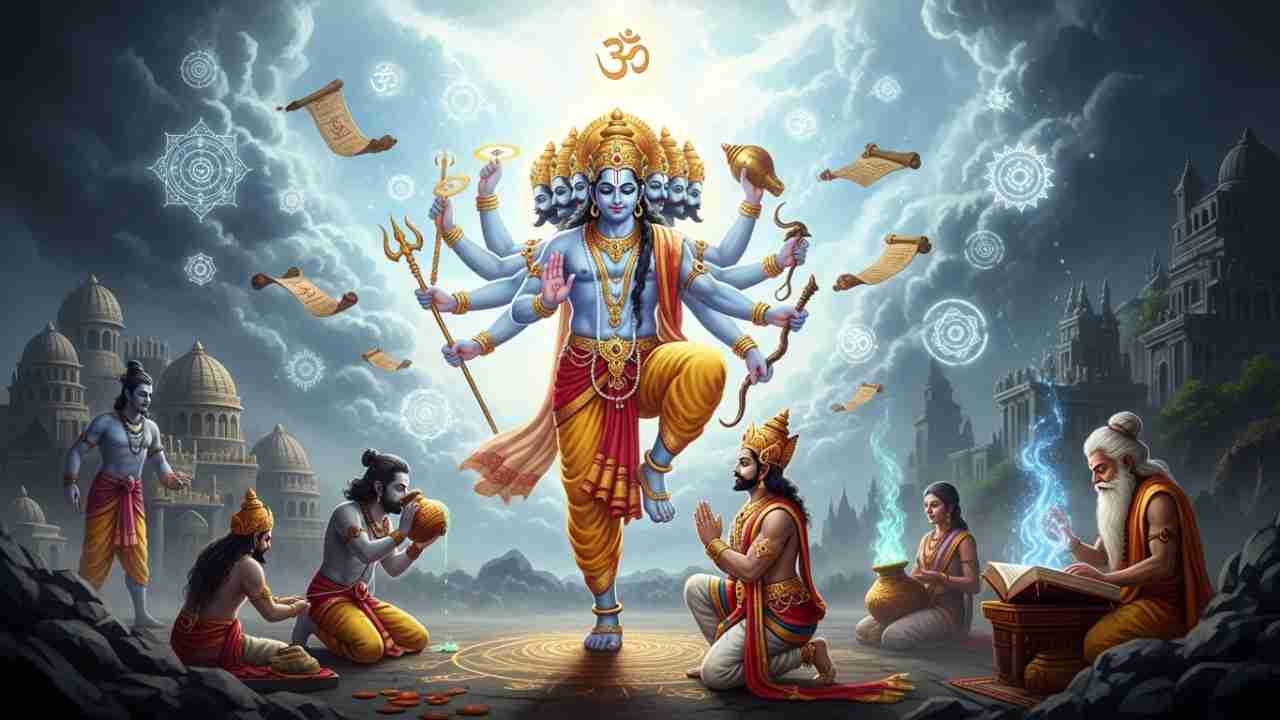
- Vritra’s Defeat: Indra slayed Vritra, who had imprisoned the world’s waters. The victory symbolizes overcoming ignorance through divine insight.
- Bhasmasura’s Downfall: The Asura who gained the power to burn anyone with his touch ended up destroying himself, a warning against arrogance.
- Vamana and Mahabali: Lord Vishnu’s dwarf form humbled the generous Asura king, teaching that devotion and humility transcend power.
- Prahlada and Hiranyakashipu: A son’s faith in God triumphed over his father’s tyranny, proving that truth always prevails.
- Tarakasura’s Defeat: Lord Kartikeya defeated this demon, showing how discipline and courage overcome pride.
So, the Devas vs Asuras Mythological Battle is much more than a tale of celestial warfare. It is a grand allegory of the human condition. A reflection of the eternal tug-of-war between light and darkness within every being. The Devas remind us to live with wisdom, compassion, and faith, while the Asuras remind us of the dangers of ego and desire.
Every moment of life is a miniature version of this cosmic conflict. The outcome depends on which side we nurture, the divine or the demonic within us. The real message of the Devas vs Asuras Mythological Battle is that enlightenment, harmony, and peace come only when the divine in us triumphs over ignorance and pride.
FAQs
1. What is the main cause of the Devas vs Asuras Mythological Battle?
The battle arises from the eternal struggle between righteousness (Dharma) and unrighteousness (Adharma).
2. Who are the Devas and Asuras in Hindu mythology?
Devas are celestial beings representing light and virtue, while Asuras symbolize power, pride, and material desire.
3. Were Devas and Asuras related?
Yes. Both were born to Sage Kashyapa, making them divine cousins engaged in an eternal spiritual rivalry.
4. Why did the Devas and Asuras churn the ocean together?
They cooperated to obtain Amrita, the nectar of immortality, symbolizing how even opposites must unite for higher creation.
5. Which gods are considered Devas?
Prominent Devas include Indra, Agni, Varuna, Surya, and Vishnu, who together maintain universal order.
6. Who are some famous Asuras?
Notable Asuras include Mahishasura, Ravana, Vritra, and Hiranyakashipu, each known for immense power and tragic pride.
7. What lessons can we learn from the Devas vs Asuras Mythological Battle?
It teaches that balance, humility, and wisdom are superior to strength and greed.
8. How do goddesses influence this cosmic battle?
Goddesses like Durga and Kali embody divine energy, defeating Asuras when masculine forces fail to uphold Dharma.
9. Is the Devas vs Asuras Mythological Battle still relevant today?
Yes. It mirrors the moral and emotional struggles humans face daily between right and wrong.
10. What is the ultimate message of the Devas vs Asuras Mythological Battle?
That good and evil coexist, but enlightenment is achieved when the divine light of truth triumphs over darkness within.
